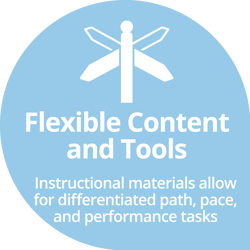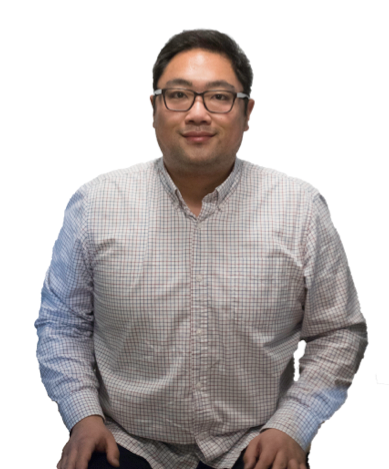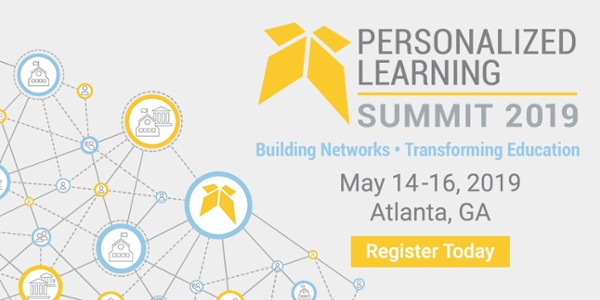Personalized learning represents a shift in how we teach students, a reflection of our changing educational landscape, and an acknowledgement that the world we must prepare our students for is different than the one we grew up in. One of the biggest ways education has already changed is in the content and tools students engage with. This blog series is made up of interviews with education leaders who work with digital content, curricular resources, and instructional tools. It is meant to highlight ideas and perspectives we aren’t normally exposed to. In doing so, this series is meant to spark new ideas, discussions, and ultimately empower teachers and leaders.

Introduction
Lisa Ramish designed the math instructional strategy used by a network of successful charter schools. Read about her approach to teaching standards, digital content, and whole group instruction.
Digital content has really taken off since you started in education. There are some educators who see technology replacing the role of the teacher. What is your response to concerns that digital content is a threat to the teaching profession?
Digital content is just another curriculum that happens to be on a computer. And like any curriculum, it’s really about the interaction between it, the teacher and the students. For example, let’s say a teacher designs some great conceptual problems but teaches the content using rote memorization strategies. Suddenly this really rich task becomes just another worksheet. The same applies to digital content. The interactions between the students, the teacher, and the content is what can make it a really worthy task. There may be some people who see more risks with digital content, but there are also maybe more rewards; more opportunities to differentiate for example. There’s never a place where the curriculum is going to take the teacher out of the equation.
What advice do you have for teachers and leaders using digital content?
For teachers, when it comes to digital content, the key is to make sure it aligns to your scope and sequence, and that struggling students don’t progress to new concepts before you’ve taught them. The kids who are moving at a slower pace than you, the teacher, should not be moving at a faster pace through digital content.
For school and district leaders, if digital content is a priority, you talk about it. We were really intentional about the integration of digital content originally, and we’ve kind of taken that for granted since then. There was a sense that it would be self-perpetuating. Digital content is so good at self-driving, it’s really easy for a teacher to ignore it and let it just do its thing, but that’s of course not a best practice. Also, it has to be scheduled; if it’s just being squeezed in, it’s probably not happening, or not happening well.
Deeper Dive: Check out our webinar , School Leader Habits - Promoting Next Gen Teaching and Learning Models: Flexible Content & Tools
So much has changed in education; the advent of digital content, the Common Core, the move towards personalization. How has your approach to teaching and learning changed?
Unless every student is getting 100% on every grade-level test, there is no need to teach above grade-level. It’s important for kids to really stick with their grade-level and learn to master it. Teachers need to be comfortable going back and teaching the same content a different way. Students can benefit from learning grade level content from many different entry points, especially in terms of how they demonstrate their understanding of a concept. There’s a basic understanding of a concept and then being able to write about that concept. But then do students understand it spatially, do they understand it visually, what are all the models students can use to show an idea, can they connect this with other topics? There’s just so much to explore in a single grade.
That’s such an interesting perspective, that you differentiate the way students practice work rather than the content of that work. How do you explain this approach in teaching math to the teachers you coach?
When it comes to teaching conceptual math, I’ve boiled it down to four points:
- Concrete: All learning progresses from the concrete to the abstract. Make sure that the concrete is your first entry point with kids. It’s really important that math make sense. Students really have to understand a concept, so where you begin is really important.
- Connections: Instructional shortcuts can undermine future lessons. It’s important to understand how different approaches to teaching a concept are consistent with one another, and understand what came before and what comes after. It’s really easy to look at your curriculum, see how it’s taught, and say, “Yeah, there’s an easier way to do that.” When you do that, often times, you’re missing a way it’s eventually going to be taught in an upper grade.
- Communication: Language is both a process of learning and evidence of learning. When we teach a new concept, a student’s ability to talk about a new concept is going to facilitate the learning of that concept and be evidence that they have truly learned it. Student talk and student writing is a huge component.
- Correctness: Exactly right now prevents misconceptions later. The correctness of what we learn is so important, because we know that math concepts build on one another. So for example, if I were comparing numbers and I accepted a student answer that, “This number is bigger because it has more digits,” that is true, for now, but it’s not going to be true with decimals. Whatever you teach today, you don’t want to reteach correctly later in the year or in the next grade. Misconceptions are really hard to undo; once an idea gets into a kid’s brain, it’s really hard to change it.
Related Resource: Learn about activities to support the implementation of the Core Four elements in the classroom - including Flexible Digital Content & Tools - with the Core Four Continuum of Personalized Learning
What does the future of teaching and learning look like?
I think that we will focus less on small group instruction and more on providing great whole group instruction.
That’s a different perspective than what we normally hear. Tell me more.
It’s because we have digital content that is tailored to the needs of individual students that teachers can focus more on creating really amazing learning experiences for the whole group. When I first got into education I focused on centers and everyone getting a different lesson. It’s a lot to ask that teachers deliver several great lessons. Instead I would rather see teachers focus on one amazing lesson that reaches all learners.
About Lisa Ramish
Lisa Ramish is a math instructional coach at the KIPP network of charter schools in Washington, DC and developed their approach for integrating digital content into their math curriculum. She taught math for ten years and has coached teachers for the last six. Under her leadership, all of the network’s elementary schools are among the highest-performing in the city on the math PARCC exam. She is also the 2011 recipient of the Presidential Award for Excellence in Mathematics and Science Teaching.
If you're looking for more learning and inspiration around personalized learning, content & curriculum, classroom practices, and more – join us at the Personalized Learning Summit 2019 May 14-16 in Atlanta, GA. The registration deadline is coming up fast, so register today to save your spot!






